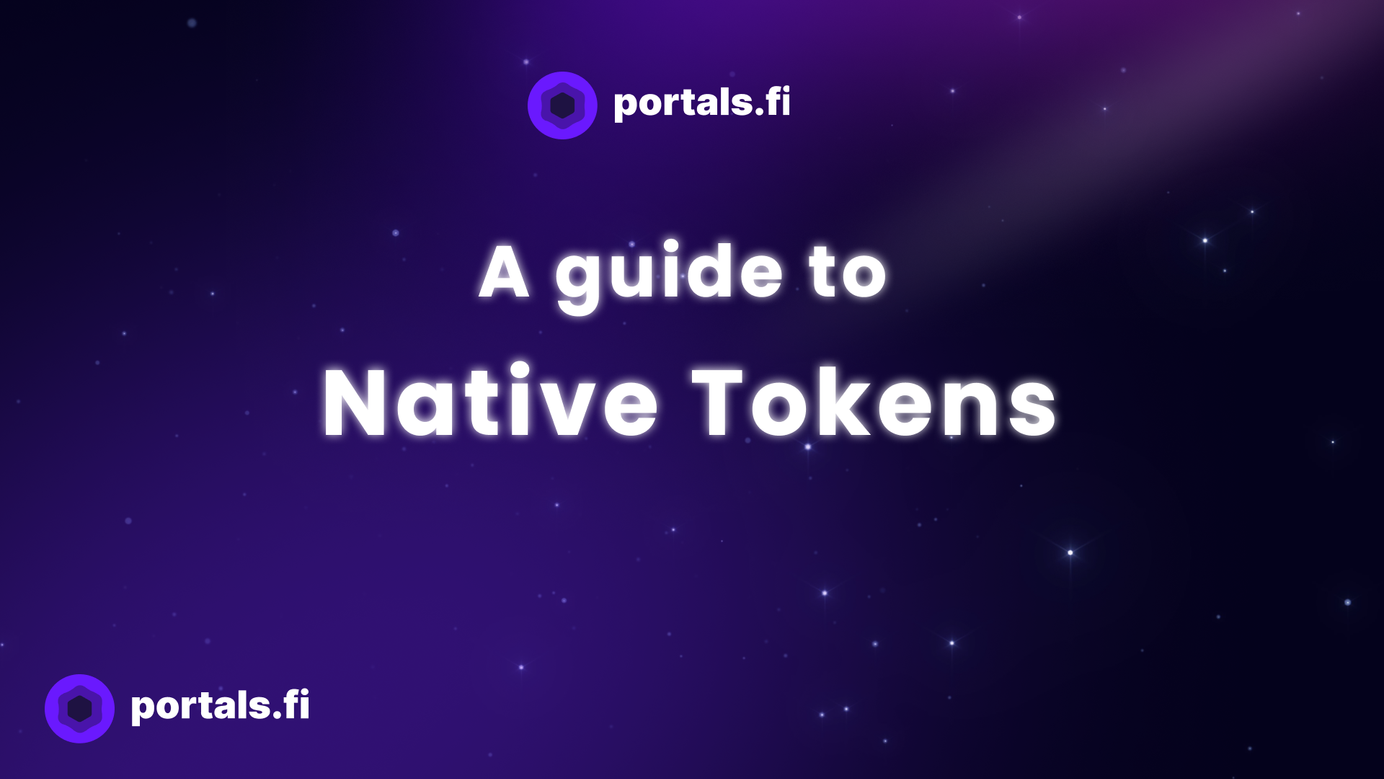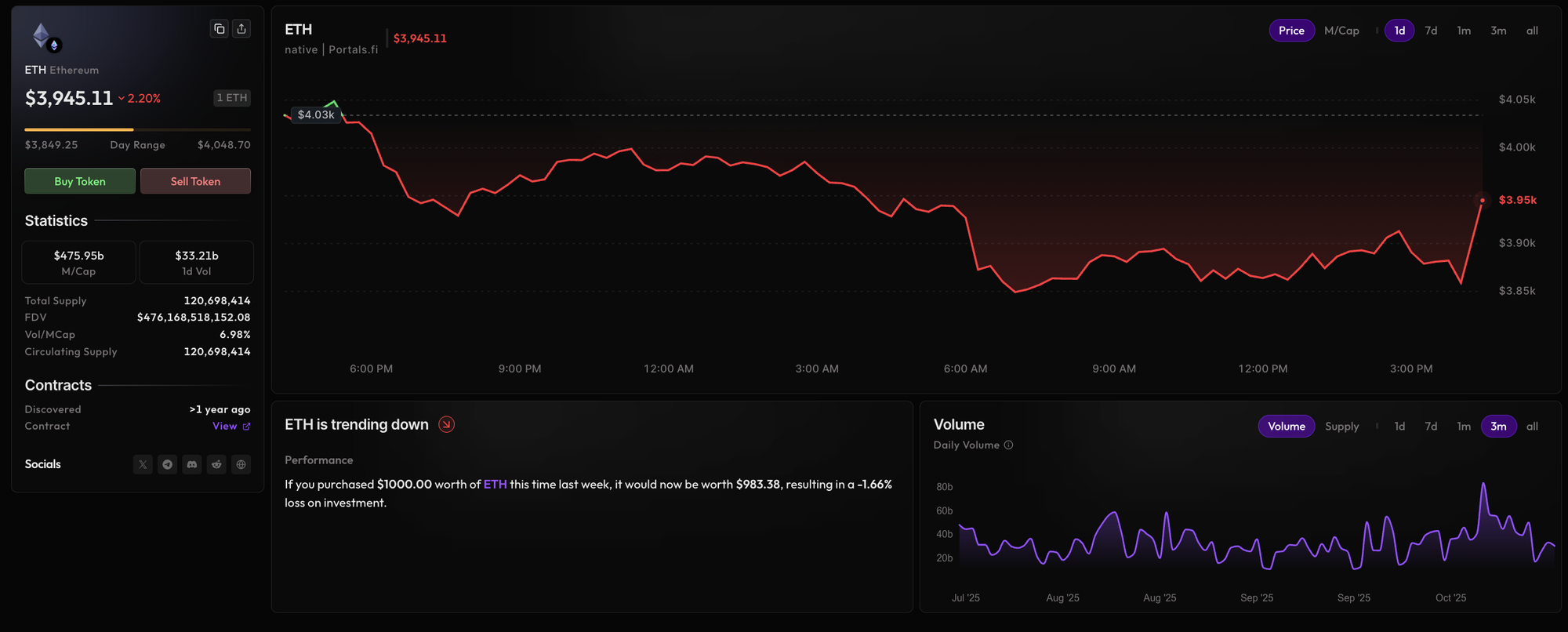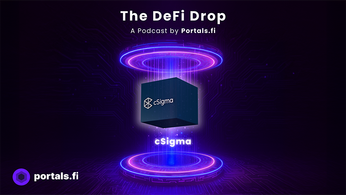
Portals.fi Explained: A Guide to Native Tokens
Welcome to the first instalment of our series breaking down the powerful search filters on Portals.fi.
When you explore the vast world of DeFi, you'll encounter a variety of terms and categories. One of the most fundamental is "Native." This guide will explain what Native opportunities are, how to identify the best ones, and how to use Portals.fi as your gateway to these foundational assets.
Degen? Skip the Part 1.
Part 1: What Are Native Tokens?
A Native Token is the primary cryptocurrency of a specific blockchain network. Think of it as the official currency of a digital nation. Just as the United States has the US Dollar and Japan has the Yen, the Ethereum blockchain has Ether (ETH), the Solana blockchain has Solana (SOL), and the Bitcoin network has Bitcoin (BTC).
These tokens serve several critical functions:
- Paying Transaction Fees: To perform any action on a blockchain, such as sending money or interacting with an application, you must pay a network fee, often called "gas." This fee is almost always paid in the network's native token.
- Securing the Network: In modern Proof-of-Stake (PoS) blockchains, native tokens are used for staking. Users lock up their tokens to help validate transactions and secure the network, earning rewards in return.
- Governance: In many networks, holding the native token grants you voting rights on proposals that determine the future of the protocol.
Understanding native tokens is the first step to navigating DeFi, as they are the foundational layer upon which everything else is built.
Part 2: How to Find the Best Native Opportunities
The primary "opportunity" associated with native tokens is staking. By staking your native tokens, you are essentially putting them to work to earn more of the same token. When evaluating where to stake your assets, consider the following key metrics.

Part 3: Best Practices for Native Token Staking
Engaging with native opportunities is one of the most straightforward ways to earn yield in DeFi. Here are some best practices to follow:
- Start with Blue-Chip Assets: Begin your journey by staking the native tokens of large, established blockchains like Ethereum (ETH) or Solana (SOL). These networks have a proven track record of security and a large community of validators.
- Understand the Risks: While generally safer than other DeFi strategies, staking is not risk-free. The primary risks include the price volatility of the native token and the potential for "slashing," where a validator is penalized for misbehavior, resulting in a loss of some staked funds.
- Consider Your Time Horizon: Due to lock-up and unbonding periods, staking is best suited for long-term investors who believe in the future growth of the network.
- Diversify Your Validators: If you are staking a significant amount, consider splitting it across multiple validators. This reduces the impact on your investment if a single validator experiences downtime or is slashed.
Part 4: A Guide to Executing on Portals.fi
Portals.fi is your command center for accessing the entire DeFi ecosystem, and it starts with native tokens. Here’s how you can use the platform to find and act on native opportunities.
Step 1: Navigate to the Portals.fi Dashboard
Begin by opening the Portals.fi dashboard. Here, you will find the main search and discovery tools.

Step 2: Use the "Native" Filter under the search bar
In the search bar labelled "Find tokens, pools, LSDs and more," you will see a series of filter tags. Click on the "Native" tag.

Step 3: Explore the Foundational Assets
The dashboard will now display a list of the native tokens for major blockchain networks, such as ETH, BNB, AVAX and so on. This view enables you to view the current price, market cap, and trading volume for these core assets.

Step 4: Acquire Your Desired Native Token
Portals.fi allows you to seamlessly swap your existing assets (like a stablecoin such as USDC) for the native token you wish to stake. Use the integrated swap functionality to acquire the amount you need for your investment.
Step 5: Find a Staking Opportunity
Once you hold the native token, you can put it to work. While direct native staking often requires technical expertise, Portals.fi makes it easy to access Liquid Staking providers (a topic we will cover in a future post). You can search for protocols like Lido or Rocket Pool directly in the search bar. These platforms allow you to stake your native tokens while receiving a liquid token in return, giving you the best of both worlds: staking rewards and liquidity.
Conclusion
Native tokens are the bedrock of the decentralized web. By understanding what they are and how to put them to work through staking, you can participate directly in the growth and security of the most important blockchain networks. Portals.fi provides the essential tools to discover, acquire, and manage these foundational assets, making it the perfect starting point for your DeFi journey.
Portals Blog - The latest Portals DeFi News & Updates Newsletter
Join the newsletter to receive the latest updates in your inbox.



